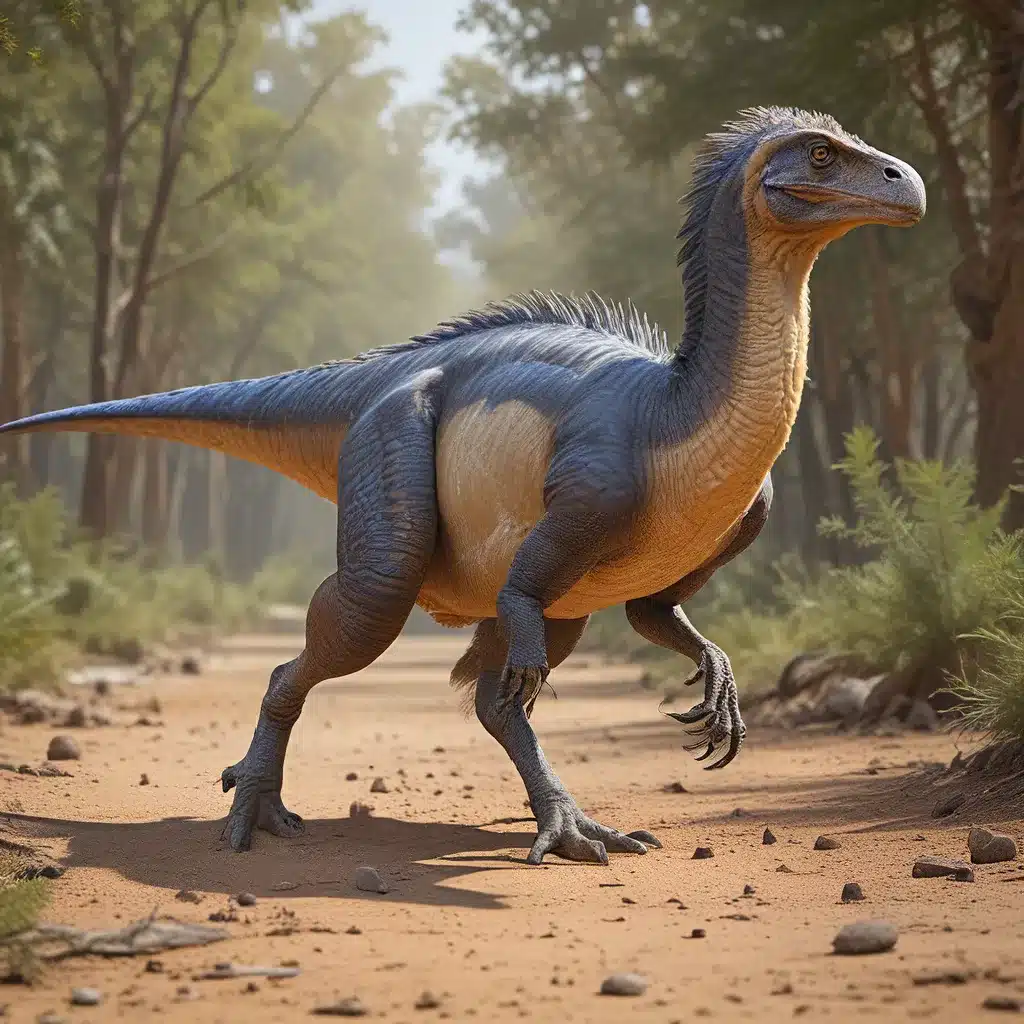
Therizinosaurs, an enigmatic group of feathered dinosaurs, have long captivated the imaginations of paleontologists and dinosaur enthusiasts alike. These herbivorous behemoths, with their distinctive clawed hands and unique body plans, represent a fascinating chapter in the evolutionary history of the Mesozoic Era. In recent years, groundbreaking discoveries and ongoing research have shed new light on the origins, adaptations, and changing roles of these remarkable creatures within the ancient ecosystems they inhabited.
Unveiling the Mysterious Origins of Therizinosaurs
The evolutionary origins of therizinosaurs have long been a source of debate among paleontologists. Early theories suggested they were closely related to carnivorous theropod dinosaurs, but more recent evidence has challenged this view. Intriguing discoveries, such as the feathered therizinosaur fossil unearthed in China, have provided crucial clues to their true evolutionary affinities.
Paleontologists now believe that therizinosaurs may have descended from a group of early herbivorous dinosaurs known as therizinosauroids. These ancient creatures appear to have diverged from the theropod lineage, evolving a suite of adaptations that allowed them to thrive on a plant-based diet. The discovery of feathered therizinosaur fossils has further challenged traditional views, suggesting that these dinosaurs may have been more closely related to birds than previously thought.
Unraveling the Adaptations of Therizinosaurs
One of the most striking features of therizinosaurs was their distinctive clawed hands, which set them apart from other herbivorous dinosaurs. These formidable appendages were likely used for a variety of purposes, including foraging, defense, and even self-grooming. Paleontologists have proposed that the long, curved claws of therizinosaurs may have been used to strip leaves and branches from vegetation, allowing them to access a wider range of food sources.
In addition to their unique hand morphology, therizinosaurs also possessed a distinctive body plan, characterized by a large, barrel-shaped trunk and a relatively small head. This body shape may have been an adaptation to their herbivorous lifestyle, providing them with the necessary digestive capacity to process large amounts of plant material. Furthermore, the presence of feathers on some therizinosaur species suggests that these dinosaurs may have been able to regulate their body temperature and potentially even engage in complex social behaviors, such as display and courtship.
Exploring the Changing Roles of Therizinosaurs in Ancient Ecosystems
As our understanding of therizinosaurs has evolved, so too has our appreciation for their ecological significance within the ancient communities they inhabited. Recent studies have suggested that these herbivorous dinosaurs may have played a crucial role in shaping the plant communities of the Mesozoic Era, acting as keystone species that helped to maintain the balance and diversity of their environments.
Intriguingly, some researchers have proposed that therizinosaurs may have even developed cooperative feeding strategies, working in groups to access and process large quantities of vegetation. This hypothesized social behavior would have allowed them to capitalize on the abundant plant resources available in their environments, potentially contributing to their evolutionary success over millions of years.
As we continue to unravel the mysteries of therizinosaurs, it is clear that these remarkable dinosaurs played a vital role in shaping the ancient world. From their enigmatic origins to their unique adaptations and ecological significance, therizinosaurs offer a tantalizing glimpse into the dynamic and ever-evolving story of life on our planet.
The Ongoing Exploration of Therizinosaur Diversity
The therizinosaur family tree continues to grow as new discoveries expand our understanding of this diverse group of dinosaurs. Recent fossil finds have revealed the existence of previously unknown therizinosaur species, each with its own unique adaptations and evolutionary histories.
For example, the discovery of the Jaculinykus yaruui fossil in Spain has provided insights into the dietary habits and foraging strategies of these herbivores. With its enormous thumb claw, Jaculinykus is thought to have been adept at digging for underground food sources, potentially expanding the known ecological niches occupied by therizinosaurs.
Furthermore, the identification of Protathlitis cinctorrensis, another newly described therizinosaur species from Europe, suggests that these dinosaurs may have been more geographically widespread than previously believed. As paleontologists continue to uncover these evolutionary enigmas, our understanding of therizinosaur diversity and their adaptations to different environments is steadily expanding.
Embracing the Mysteries of Therizinosaurs
The story of the therizinosaurs is one of scientific discovery, evolutionary intrigue, and the ongoing pursuit of knowledge. As we delve deeper into the fossil record and explore the latest research, we are constantly reminded of the remarkable adaptability and ecological significance of these feathered dinosaurs.
By embracing the mysteries that surround therizinosaurs, we can gain valuable insights into the complex and ever-changing world of ancient life. Through continued investigation and collaboration among paleontologists, we can unravel the evolutionary puzzles that these captivating creatures present, ultimately enhancing our understanding of the dynamic and fascinating history of our planet.


